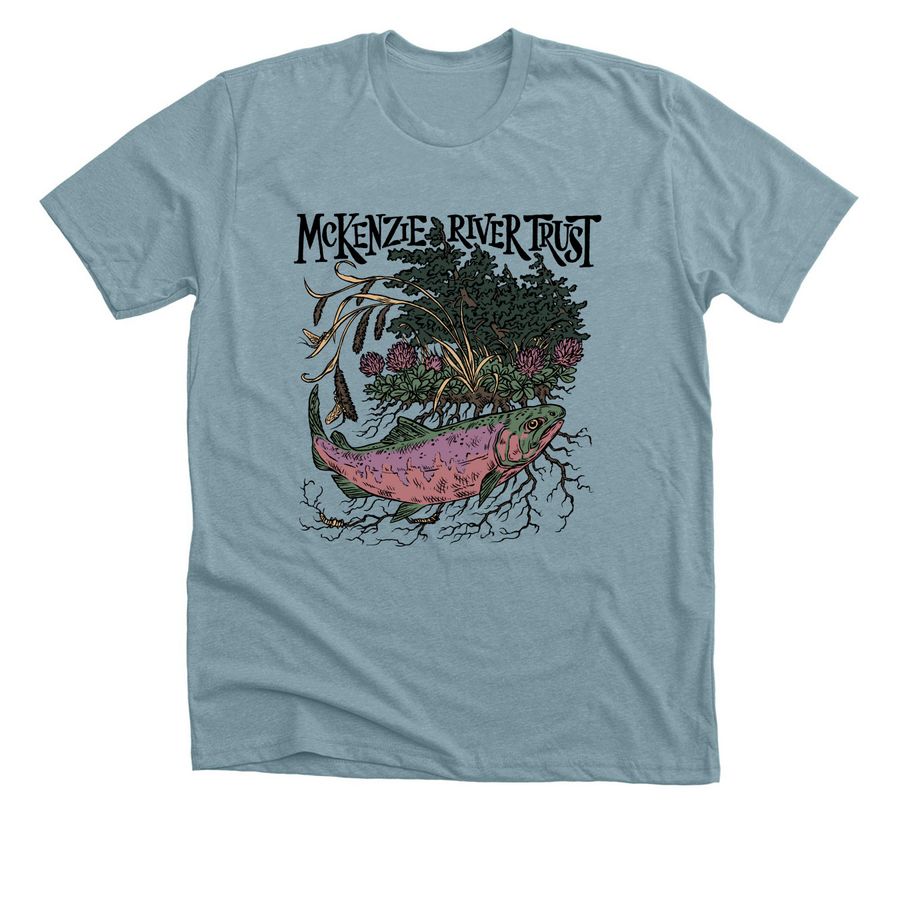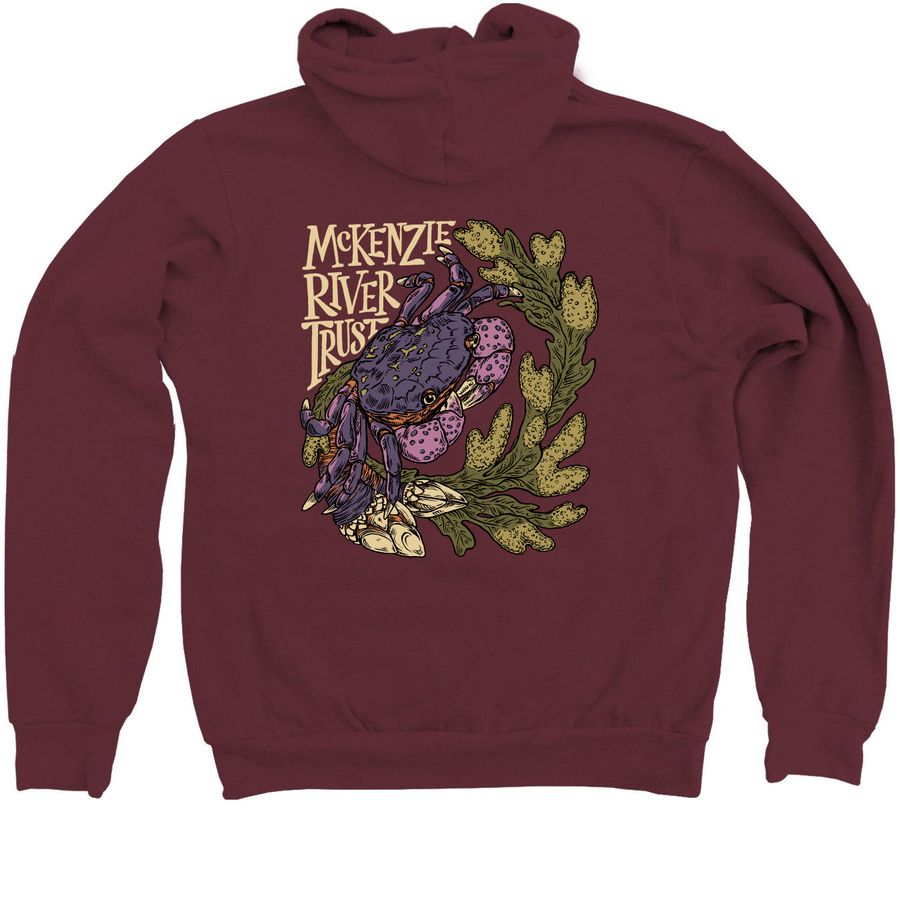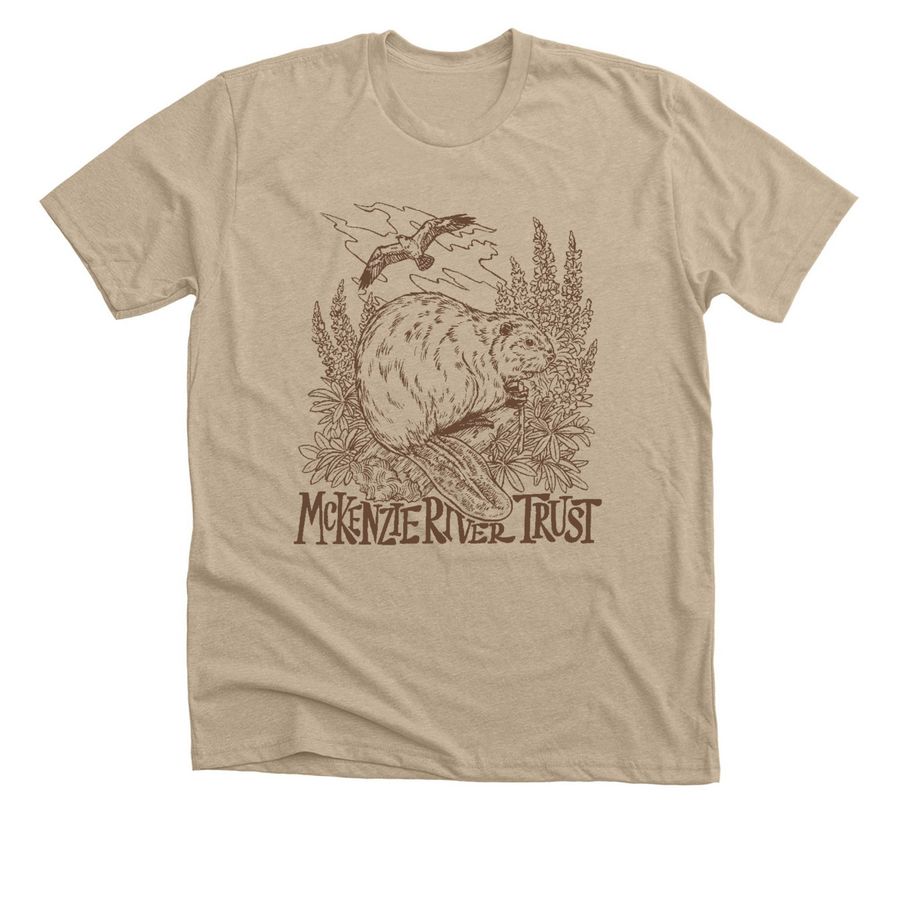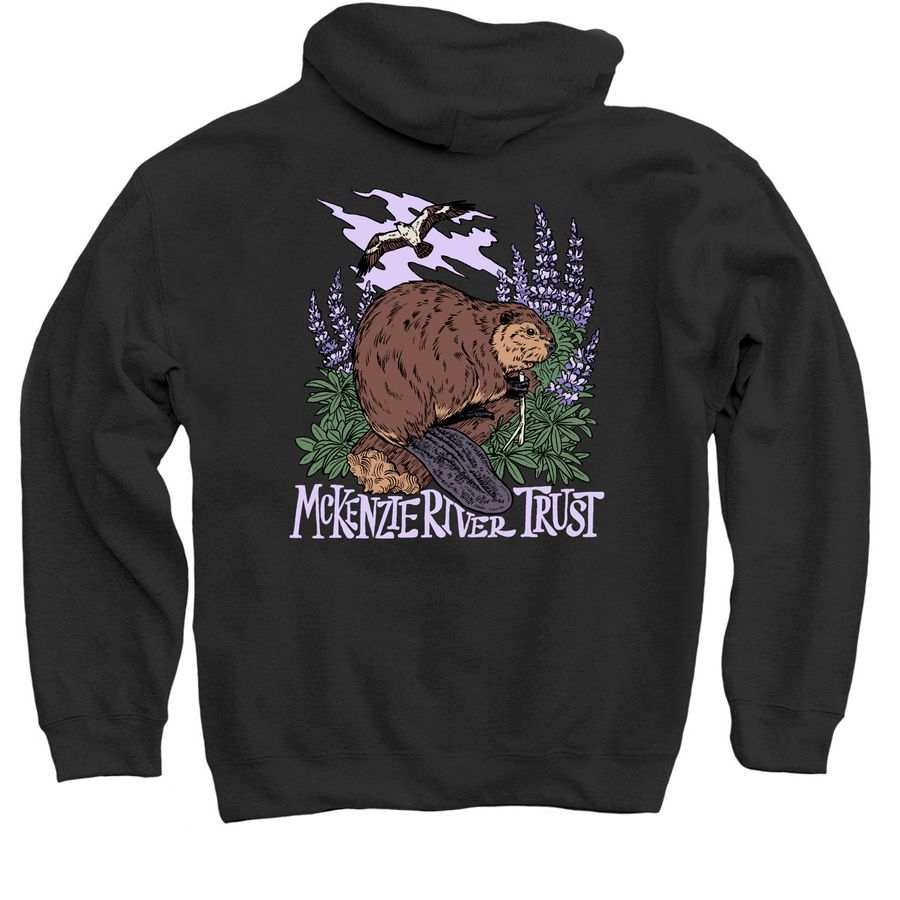Caring for the lands and rivers we cherish
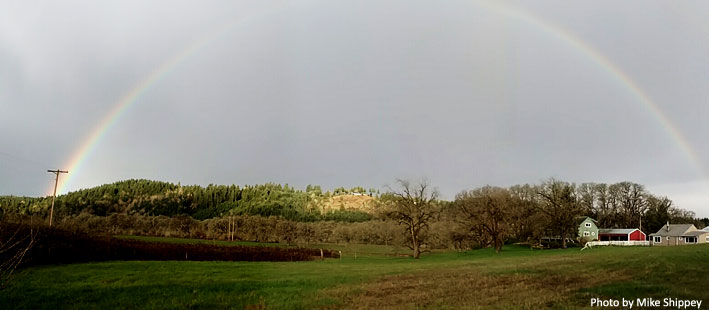
With your generous support, 38 acres of wetlands and camas-filled meadows are now permanently protected for conservation. Thank you!
When Mary Minniti and Mike Shippey bought their 47 acre farm property 17 years ago, both buildings and land were clearly diamonds in the rough… with a heavy emphasis on rough.
“This living room ceiling was low and dark. It was like being in a cave: there were no windows providing a view of the wetland,” remarks Mary during a recent visit. “We thought we would move onto the land in five years, but we were spending every weekend here, so we just dove in. And we were here within 18 months.”
At the same time, Mike had looked on the heavily impacted land with promise. “Scattered among the meadow of planted forage grasses, I found many natives, including some rare ones, like Bradshaw’s lomatium.” An accomplished landscape architect, Mike set about to create Coyote Creek Meadows, a restoration project that included two wetland mitigation sites and a larger labor of love.
“We planted those ash, and those slough sedge; looks like the ash could use some water.”
We’re walking their property on a warm late September afternoon, meandering with the banks of Coyote Creek, just a mile upstream of its entry to Fern Ridge Reservoir. Coyote Creek Meadows is the latest addition to the McKenzie River Trust’s portfolio of protected lands: 38 acres under conservation easement, just 1/4 mile downstream from the Trust’s Coyote Spencer Wetlands, and 1/2 mile upstream from an extensive Oregon Department of Fish and Wildlife Management Area. Mary and Mike worked with MRT staff over the last two years to agree on terms and secure funding through the North American Wetlands Conservation Act (NAWCA), a program of the U.S. Fish and Wildlife Service.
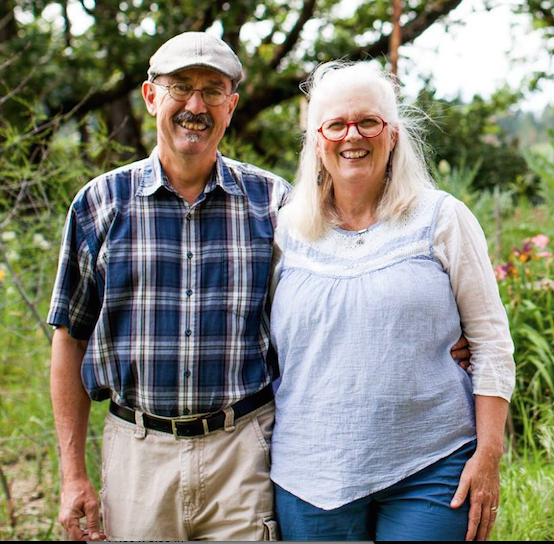
Landowners Mike Shippey and Mary Minniti protected their wetland property near Eugene with a conservation easement. Photo by Anne Nunn Photographers.
“We see our property as piece of that larger conservation vision for Coyote Creek. Our daughters and granddaughters all love this place as well. And they know that whatever they choose to do with the house and its lot, this larger property will be protected for nature and the public good long after we are gone.”
In addition to serving as a refuge of native wetland plants, Coyote Creek Meadows provides habitat for cutthroat trout, otters, elk, black bear, a metropolis of frogs, and large flocks of waterfowl in the winter. “We’ve had a dozen or so wood ducks roosting in the oaks next to our house,” says Mary with pride and wonder.
Both Mary and Mike attribute their love of nature and their commitment to its care to childhoods spent outside. Mike grew up on the outskirts Salem, where two acres of filberts and ready access to Mill Creek gave him the chance to explore, hunt, and fish. Mary’s childhood backyard was a forest on the edge of Renton, Washington. Their daughters now have careers in literature and food, and the land clearly calls to them both.
“This is the wedding ceremony meadow,” says Mike as we continue our walk. “Our daughter of course had to pick the one spot that was thick with 8’ tall Armenian blackberry, saying, ‘I want to be married between these two oak trees.’” Weeks of mowing and digging cleared out the blackberry, and extended the footprint of restoration. The meadow is now thick with native grasses, forbs and shrubs….
Clearly this is a family place, with a family that keeps growing. Grandchildren’s toys are scattered here and there. And long time MRT volunteers Matt and Holly McRae spent two years living in a small rental cottage on the site, caring for the place, caring for the earth, and caring for each other.
“Mary and Mike have a commitment to their land: to caring for it, to restoring it, to preserving its ecological function,” says Holly. “They have an appreciation for all of the communities that live on their property – plants, fungus, insects, animals large and small. They weave together a community of people connected by their property – a connection created by a place, rather than by time or proximity.”
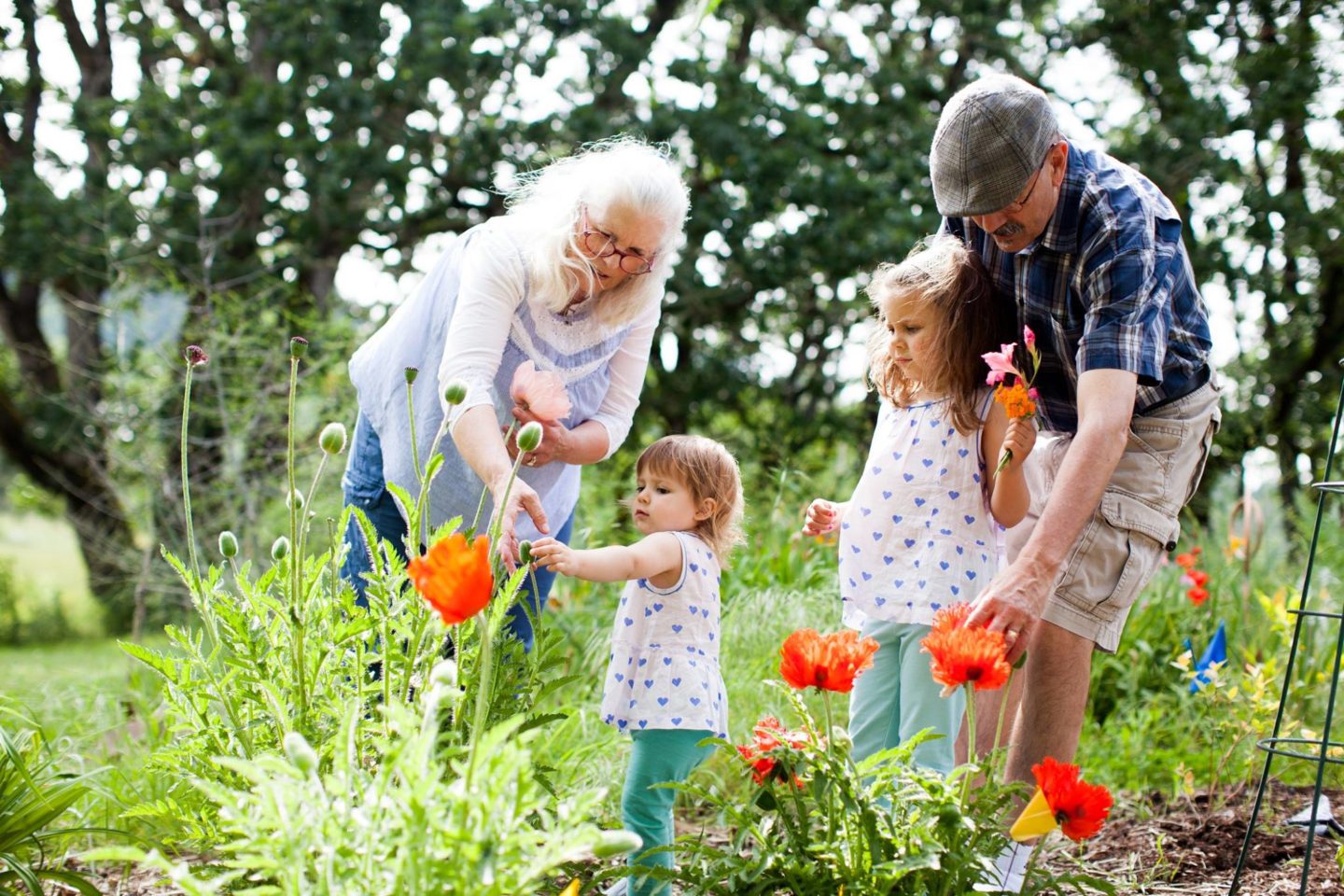
Mary and Mike with their grandkids outside their home along Coyote Creek. Photo by Anne Nunn Photographers.
Mary’s career in health care has culminated in work that invites families to participate more closely in the recovery of loved ones, not relying on experts alone, but working hand in hand. They are taking a similar approach with Coyote Creek Meadows.
“Mary and Mike are generous with their time and affection.” Matt McRae adds. “Every Thanksgiving dinner begins with a walk around the property. To know Mary and Mike is to know their property. That’s who they are – they love and share that space. They share their love of that land. They truly look at the future for their grandchildren, and the legacy they will leave.”
The Long Tom Watershed Council, the U.S. Fish and Wildlife Service, Institute for Applied Ecology, the McKenzie River Trust… these are all professional organizations with strategic objectives and the capacity to carry out conservation projects. Mary and Mike cherish their place and the good fortune that allowed them to acquire and now care for it. The partnership, that melding of mind and heart in a place, in the work of conservation, is an investment that gives rise to more Bradshaw’s lomatium, more wood ducks, and fields of camas and buttercups in the spring. Look for an announcement for a guided tour of the site in spring 2017.

